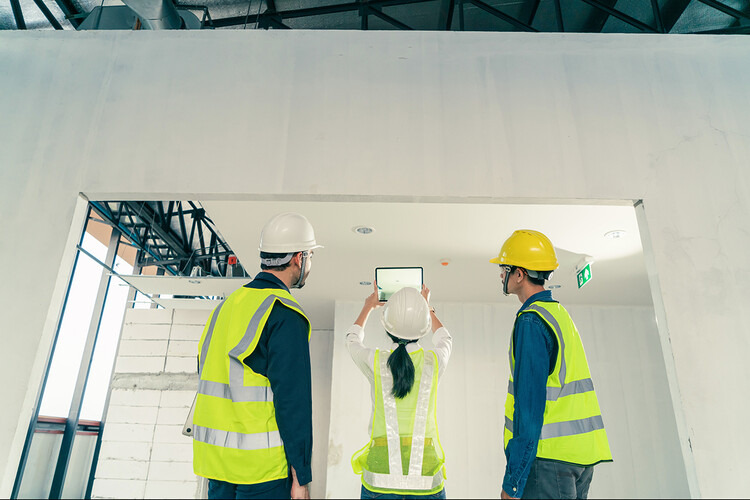As awareness of environmental health and sustainability grows, the demand for building materials that align with these values does too. Formaldehyde-free insulation offers an alternative to traditional options by eliminating formaldehyde, a known irritant and potential health risk. CMI Insulation is becoming more and more popular among architects, builders, and homeowners, aiming to create safe and eco-friendly living spaces. It caters to those prioritizing health and environmental responsibility, making it a compelling choice in the modern construction landscape.

Content
Benefits of formaldehyde-free insulation
Formaldehyde-free insulation enhances indoor air quality by eliminating the release of toxic chemicals found in traditional materials. Cleaner air can result in fewer health issues, such as respiratory problems and allergies, creating a healthier living and working environment. This type of insulation also supports sustainability efforts by reducing the presence of volatile organic compounds (VOCs) that add to air pollution and environmental degradation. Choosing formaldehyde-free options can be particularly beneficial in spaces where people and pets spend a lot of time, like homes, schools, and offices. These materials’ health benefits and eco-friendly nature make them an increasingly popular option among environmentally conscious builders and homeowners.
Environmental impact
Formaldehyde-free insulation significantly lowers the emission of volatile organic compounds (VOCs), which are known to contribute to air pollution and environmental harm. Builders can effectively minimize their environmental footprint by selecting materials with reduced VOC emissions. This choice is particularly relevant for projects seeking sustainable building certifications like LEED, which often mandate the use of low-emitting materials. Using formaldehyde-free options can also support the overall goals of eco-friendly building practices. These materials help create healthier indoor environments and contribute to broader sustainability initiatives. As a result, formaldehyde-free insulation is increasingly seen as a vital component in environmentally responsible construction.
Types of formaldehyde-free insulation
Several types of formaldehyde-free insulation are available in the market today. Common materials include fiberglass, cellulose, and cotton-based insulation. Each of these options provide distinct advantages in terms of performance and sustainability. Fiberglass insulation is known for its thermal performance and sound absorption qualities. When manufactured without formaldehyde, it becomes an even more attractive option for eco-conscious builders.
Similarly, cellulose insulation, made from recycled paper products, is naturally free of formaldehyde and provides excellent thermal resistance. Cotton-based insulation, often from recycled textiles, offers a non-toxic alternative to traditional materials. Comparatively, traditional insulation options like some types of spray foam can contain formaldehyde or other VOCs, which may deter those looking for greener solutions.
Installation and cost considerations
The installation process for formaldehyde-free insulation may differ from that of traditional materials. For instance, cellulose insulation often requires specialized equipment to blow it into place, while fiberglass batts can be installed using conventional methods. Builders must understand these differences to ensure proper application and optimal performance.
Cost is a crucial factor in any building project. While formaldehyde-free insulation may have a higher upfront cost than traditional options, the potential savings over time can be significant. Improved energy efficiency and reduced health-related issues can lower utility bills and healthcare costs, making formaldehyde-free insulation a wise investment in the long run.
Incentives and rebates for eco-friendly building materials can also help offset initial costs, making it a more attractive option for budget-conscious projects. Understanding installation requirements and cost implications can help builders and homeowners make informed decisions.
Future trends in insulation
As technology progresses, the insulation industry increasingly focuses on sustainability and innovation. Emerging materials are designed to enhance efficiency while reducing environmental impact. Developments include advanced insulating materials with superior thermal resistance and environmentally friendly attributes. Government policies and financial incentives are driving the adoption of greener practices, encouraging builders to choose eco-friendly materials. Research and development also explore bio-based insulation options and smart insulation systems that adapt to changing conditions. These advancements promise to set new standards in energy efficiency and environmental responsibility in construction.
The construction industry increasingly embraces innovative, sustainable materials, and formaldehyde-free insulation is poised to play a critical role in this shift. As more builders and homeowners recognize its benefits, we can expect its adoption to grow, leading to healthier, more sustainable buildings. By prioritizing formaldehyde-free insulation, we take a significant step towards a future where our built environments contribute positively to our health and the planet.

Thomas is a home improvement blogger who strives to improve his life and the lives of others. He provides homeowners with helpful tips on how to renovate their homes. His goal is not only to provide easy-to-follow instructions, but also share his own personal experiences for those seeking guidance.

